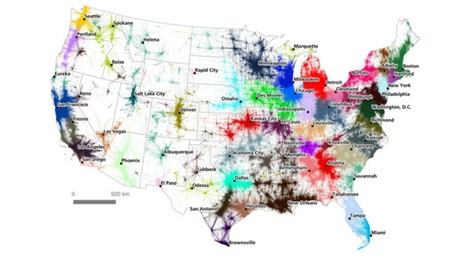Leverage your commuting members to plant new churches.

What happens when you plot four million commutes on a map? No, this is not a bad joke. The answer is not exhaust clouds, headaches, or road rage. What you actually get is a different picture of the mega-regions—a cluster of interconnected cities.
A few years back, The Guardian wrote about this “endless city” phenomenon and how the mega-regions of this world are possibly going to be one of the most significant and problematic trends in the next 50 years. I mean, just consider the fact that Anna Tibaijuka, former director of UN-Habitat, discovered that half the world currently lives in cities, and by 2050, it’s estimated that 70% of the world will.
While moving into the city is definitely trendy, and a choice that many are making today, it’s not always affordable or the particular lifestyle choice that everyone wants to make. In fact, this is one of the reasons many millennials, according to 2014 U.S. Census Bureau data, are actually moving the opposite way—from the cities to the suburbs. (Think Millennials Prefer The City? Think Again.)
…which is why this new research on commuting and mega-regions is so insightful for church leaders.
While individuals may choose to move to, or stay in, suburban or rural areas, they are still commuting into the city for work. Hence, the rise of mega-regions.
Just take a look at the map from research that Garrett Nelson of Dartmouth College and Alasdair Rae of the University of Sheffield did using census data on more four million U.S. commutes.
What you see here is not a decline of the city, but an expansion of it, because of commuting.
Instead of abandoning the suburbs or rural areas to move into the cities, many are just choosing to commute instead. This is …

